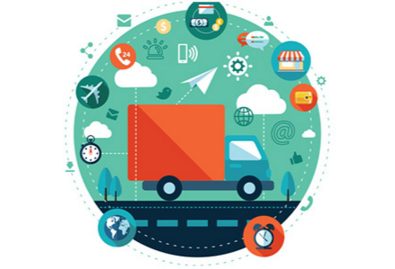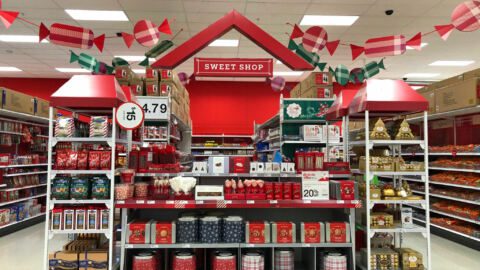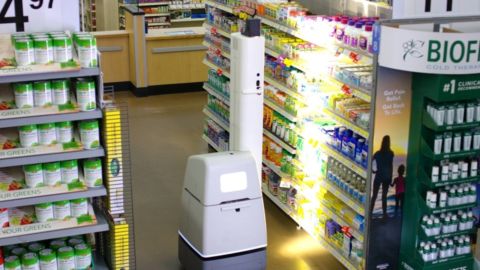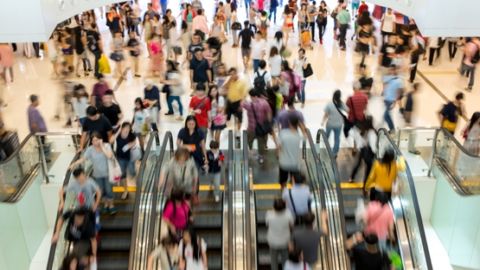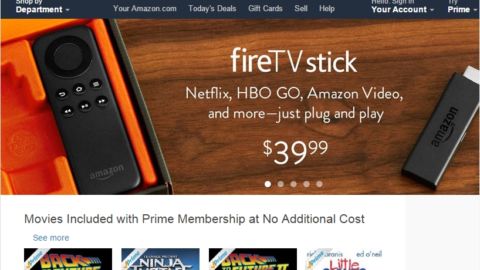Building an effective omnichannel shopping experience is difficult, but it’s a task retailers must commit to if they want to delight today’s demanding shoppers. Consumers can now order goods any time, and they expect to have those items delivered to their home or scheduled for pickup at a physical store at their convenience.
The good news is that retailers appear to be embracing the concepts around omnichannel fulfillment, including store-based fulfillment of digital orders. In fact, peak e-Commerce order volumes that were fulfilled at physical stores increased as much as 72% between Nov. 23, 2015 and Dec. 23, 2015, according to data from eBay Enterprise. Throughout the 2015 holiday shopping season, e-Commerce sales fulfilled by stores reached $515 million, which is a 62% overall increase from 2014.
The start of the holiday season further illustrated this trend, with 34% of Thanksgiving and Black Friday online retail sales being picked up in a store, according to the International Council of Shopping Centers (ICSC).
The increased ability to fulfill online purchases through the store indicates that many retailers have started to achieve their omnichannel goals. Retailers should take note of these key points as they broaden their fulfillment capabilities:
-
Don’t be threatened by Amazon, rather, learn from its successes;
-
Monitor on-demand delivery trends, but don’t rush into them;
-
Build out buy online/pick up in store and ship-from-store strategies; and
-
Optimize efficiency of nationwide distribution centers.
Amazon Leads The Way, But Don’t Fret
Amazon surely is taking a lead role in moving the needle on omnichannel commerce. To the surprise of absolutely no one, the e-Commerce giant has once again forced the hand of many retailers with the widespread acceptance of Amazon Prime. With more than 50 million Americans now signed up for the free two-day shipping service, the numbers don’t lie: consumers are flocking to this delivery model.
However, Amazon’s apparent vise grip on omnichannel fulfillment doesn’t mean that other players should be discouraged from tuning up their own offerings. The Prime service’s growth, while tremendous in the past year, is unlikely to keep pace in a market it continues to saturate.
“Retailers that offer loyalty and rewards programs based on purchases could differentiate from Amazon,” said Ken Morris, Principal at Boston Retail Partners. “Another way to compete with Amazon is to provide extremely responsive service and telephone support that is superior to that of Amazon. Retailers also need to leverage their stores in ways that add value that Amazon can’t offer remotely, such as using the stores as showrooms, distribution centers, training centers, order online and pick-up in-store, making it a theatre for shopping, bonding with customers and personalizing the experience.”
While retailers don’t always have the bandwidth to leverage their stores or e-Commerce sites in such ways, they can partner with other services to enhance numerous elements of the fulfillment process, whether that’s through buy online/pick up in store, shipping from the store or completing the delivery process.
Delivery Gets Faster, But Remains Costly
While the same-day delivery option has proven popular in the U.S., with Radiant Insights projecting a market of an expected $987 million by 2019, the costs of fuel, quick labor and infrastructure make it a fulfillment model that many retailers will have to adopt slowly to get right. A Connexity survey found that shoppers prioritize delivery costs (74%) over delivery timing (26%), showing that the price they pay for this service still matters.
Yet some retailers are finding success with delivery partners. For example, Nordstrom, Rent the Runway and 1-800-Flowers are now partnering with UberRUSH to ship same-day online purchases to consumers in New York, Chicago and San Francisco. These retailers integrated the UberRUSH API to implement the on-demand delivery system without having to make significant changes to their internal fulfillment systems. With the service, crowdsourced drivers pick up goods at the retail location and deliver them to the consumer’s selected delivery point.
Social discovery network Foursquare recently has entered the on-demand delivery market, partnering with Delivery.com to enable shoppers to order groceries, food and alcoholic beverages directly through the Foursquare mobile app. With the app, users can discover restaurants, liquor stores and grocery stores that deliver products on-demand.
Consumers Gravitate To In-Store Pickup
As on-demand delivery begins to evolve past trial stages, the option for consumers to buy a product online, then pick it up in the store, has become a more realistic option for more shoppers. As many as 45% of consumers have purchased a product online and picked it up in the store in the six months prior to April 2015, according to a survey conducted by Blackhawk Engagement Solutions. The survey also indicated that 86% would consider this option in order to save $10 on a $50 item, while 78% would consider it in order to receive an item three days earlier than usual.
More retailers are answering the call from consumers to offer the buy online/pick up in-store option. In fact, a survey from The Consumer Goods Forum and KPMG revealed that retailers list the ability to buy online and pick up products in-store as the most common shopping option they offer (59%).
“A lot of this is driven by the larger e-Commerce retailers who have been offering same- or next-day delivery,” said Aaron Dane, Retail Experience and Innovation Manager at Point Inside. “Retailers with large brick-and-mortar presences are now reacting by offering this level of service. I think it just speaks to retailers understanding that in-store pickup should be available to customers when they need it.”
Retailers such as Sam’s Club, Kmart, Toys ‘R’ Us and Best Buy appear to be getting the best bang for their buck when it comes to buy online/pick up in-store, according to research from Slice Intelligence. In fact, buy online/pick up in-store makes up 30.2% of total e-Commerce sales at Sam’s Club and 22.6% of Kmart’s total e-Commerce sales.
Buy online/pick up in-store also represents an opportunity for retailers to cross-sell and upsell other merchandise. On the flipside, the service challenges retailers to construct more effective omnichannel fulfillment strategies.
Ship-from-store and pick up in-store offer different types of challenges, explained Tobias Hartmann, President of eBay Enterprise: “Starting with ship-from-store is generally easier for retailers than buy online/pick up in-store, because the latter has you deliver promises saying that a consumer’s order will be ready to pick up tomorrow at 6 pm. What happens if the consumer runs into trouble and can’t pick the order up until after the store closes? The inventory is reserved overnight, but it takes up space and a different sales associate is likely to be in the store the next day. That’s more complex than a ship-from-store, where you don’t have that consumer touch point but you just forward your order to the most applicable store and get it shipped out.”
The Distribution Center Becomes Even More Relevant
In order to improve the ability to fulfill through every available channel, retailers must boost the efficiency of distribution centers located throughout the country. These distribution centers often need to be able to accommodate a fluctuating number of orders — and returns — processed through their doors on a daily basis.
In an article written for Retail TouchPoints, Eric Lamphier, Senior Director of Product Management for Manhattan Associates, pointed out that modern distribution centers require warehouse management systems (WMS), which can process a number of the same simple orders at once as efficiently as one single order. Lamphier also highlighted the necessity of returns handling, which is a greater challenge as more consumers make purchases based on what they see online without looking at the product in a physical store first.
“Dealing with reverse logistics is complicated — it requires specific logic and returns processing operations,” Lamphier explained. “Most importantly, in order for companies to handle returns, they must have interconnectivity and a strong set of policies and follow-up capabilities. One example of an effective practice is when distribution centers include a label for return shipping inside the original package, allowing dissatisfied customers to return their packages with minimal hassle for both parties.”
To put the growth of returns into context, 24% of consumers were expected to return or exchange gifts they received over the 2015 holiday season, according to data from Retale. This represents an increase from the 21% return rate during the 2014 season, indicating that this is an issue retailers must address as they seek to improve the functionality of their distribution centers.
In order to implement effective omnichannel logistics, retailers must be able to scale all distribution centers effectively, based on the overall business strategy (wholesale vs. retail stores), SKU patterns, and size. Additionally, while many retailers use a large network of distribution centers to deliver products to stores and consumers, a growing number also are tapping stores as distribution points.
“Once retailers get smart about what their demand patterns are, and figure out what their optimal supply allocation should be, they will redefine which distribution center should domicile or locate which inventory,” Hartmann said. “For example, if you’re a retailer that typically runs with small physical store sizes of around 1,400 square feet, it’s probably hard for you to do ship-from-store on bulky items. Retailers should try to develop algorithms where they can design the bulky, spacious merchandise to get sent from a distribution center, whereas a smaller item ships from the stores.”
Keeping Fulfillment On The Right Track
When it comes to building a business that can fulfill merchandise through all channels, retailers will have to ensure that their technology teams understand when to make the switch from legacy order management systems to platforms more appropriate for achieving their goals.
“The commitment is there from these retailers,” Point Inside’s Dane said in an interview with Retail TouchPoints. “They understand the demand of the service, and what they’re competing against online. Where they’re starting to learn is around the execution, such as scaling their fulfillment option in a way that all their stores can do that, or getting a greater understanding of data to meet customer demands in real time.”
eBay Enterprise’s Hartmann predicted that as more retailers move into omnichannel retailing, the majority of e-Commerce growth will continue to be driven by in-store fulfillment: “In the medium-term, you will not see double-digit growth in e-Commerce without store fulfillment solutions.”
Although the industry continues to evolve at a frenetic pace, retailers are making the effort to revitalize their customer experiences as they strive to compete more effectively against Amazon. Even with the convenience Amazon provides, retailers still have multiple opportunities to differentiate themselves and construct a unique brand experience.



